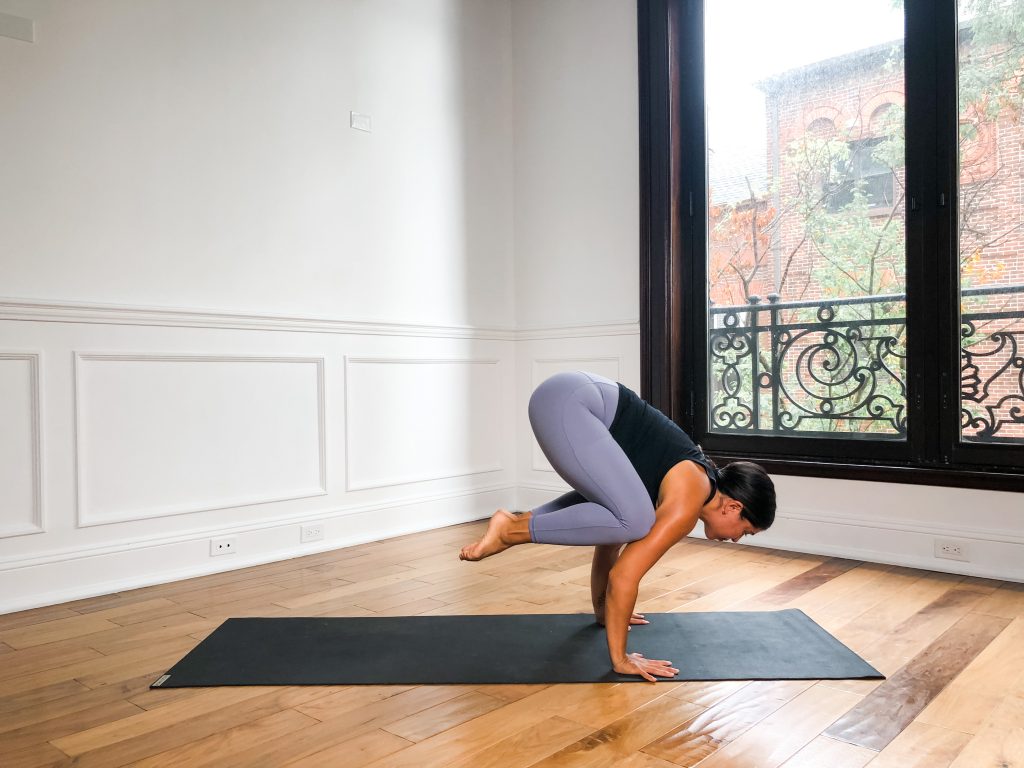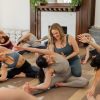
As we journey deeper and deeper into the Niyamas, it is like we are gradually unlocking pieces of wisdom guiding us closer to our true selves. To review, the niyamas are duties or observances that one engages in throughout their spiritual journey.
Svadhyaya is translated to self-study and is all about unpacking our unconscious beliefs, thoughts, values, and norms in order to connect with our divine selves. From our time in the womb to who we are now, we have been receiving and gathering input from all entities and people which surround us. This includes our parents, caregivers, family, friends, and wider social circles. This also includes our cultures, geographic locations, and environments from which we originate and/or live in.
Since we’ve been welcomed into this world it’s like we’ve been trying on and putting on different “outfits” in the form of different belief systems, opinions, and “rights vs. wrongs.” This has ultimately resulted in our current personality and who we perceive to be ourselves today.
The aim of Svadhyaya is to take off the outfits (most of which we didn’t even choose for ourselves) and to uncover the self which lies within. This self is unattached to certain beliefs, opinions, and rights vs. wrongs which allows there to be an ease when confronted with opposing views. This self is pure and does not combat others when there is a disagreement or when something doesn’t align. This self is aware that “we only know what we know” and encourages us to cultivate a beginner’s mindset in all that we do.
Once you let go of who you think you are, Svadhyaya guides you into a well of learning that never ends. Yoga equips us with the tools to handle such a never-ending well. Tools such as personal inquiry, asana practice, meditation, and study of sacred texts are all vehicles of self-study.
Svadhyaya is like the sword which everyone possesses but only few will choose to use it to cut through layers and layers of preconceived notions and established habits. It isn’t easy to partake in the task as this can release unpleasant feelings, it could cause us to question our current “identity,” and could lead us towards severing things and relationships which no longer serve us. But of course, the yogi knows what lies at the end of it all.
So now that you know you have the sword, will you choose to wield it? (I’m not sure if this is an actual quote or not, but it came to mind and felt appropriate.)
Peak Pose: Crow (Bakasana)
The immediate subset of poses which comes to mind in regards to “self-study” is the forward folding family. YES crow is also an arm balance, but it is a forward fold as many of the arm balances are. This pose puts you into a position in which to fold into yourself and balance on the hands all while trying to overcome your fear or face-planting. If you ask me, there are PLENTY of opportunities for self-study here. Not to mention, it is quite a popular pose to teach!
Thunderbolt Pose (Vajrasana)

This is a great option for you students to begin class in. The legs are folded in half, which is a necessary action for crow pose.
How to:
- Sit on the floor with the legs folded, shins and tops of the feet pressing into the ground, and heels of the feet beneath the sitting bones. You can sit up on a block with your feet pressing into the edges of the block or you can put a slightly rolled blanket under the tops of the feet if there is a large space there.
- Place your hands gently onto your lap and sit so that your spine is long with the heart over the pelvis.
- Ensure the head is in a neutral position.
- Breathe smoothly.
Side Angle Pose (Parsvottanasana)
Side angle with the hand on the inside of the leg is perfect for cultivating the leg + arm connection similar to what we will experience in crow! The arms going straight apart from one another (as opposed to the top arm over the ear) gives access to straightening the arms fully.
How to:
- From Warrior 2, take your leading hand down to the floor on the inside of your leg with your other hand straight to the sky.
- Bend deeply into the front leg and think about pressing the shin towards the front of the space.
- Straighten your arms towards the floor and sky as you reach them away from your heart.
- Your gaze could be straight ahead or up to the sky.
Tree Pose (Vrksasana)
Tree pose has a folded leg that is the same vibe which we are going for in crow pose. Part of crow pose is alignment and strength to stand on the hands, but the other part is folding the legs to lift the feet off the floor.
- Stand in mountain pose.
- Stand on the right leg to lift your left leg up and fold it in half using your hands to help.
- Externally rotate (or open up) the left hip to bring the knee out to the side.
- Connect your left foot to the inner groin of your right leg.
- Reach your arms straight to the sky.
- Return to mountain pose or flow into another pose and then repeat on the other side.
Peak Pose: Crow (Bakasana)
- Start in a yogi squat, or low squat, position with your feet flat, knees wide, and legs folded.
- Place your palms flat onto the floor a few inches ahead of your feet.
- Lift your heels and pelvis up and begin to pull your navel in, coming in the direction of a cat spine.
- Once you feel your weight move forward and support beneath your hands, fold your legs to bring the heels of your feet towards your sitting bones.
- Draw your big toes together and attempt to straighten your arms (even if they don’t actually fully straighten) to lift your chest away from the ground.










